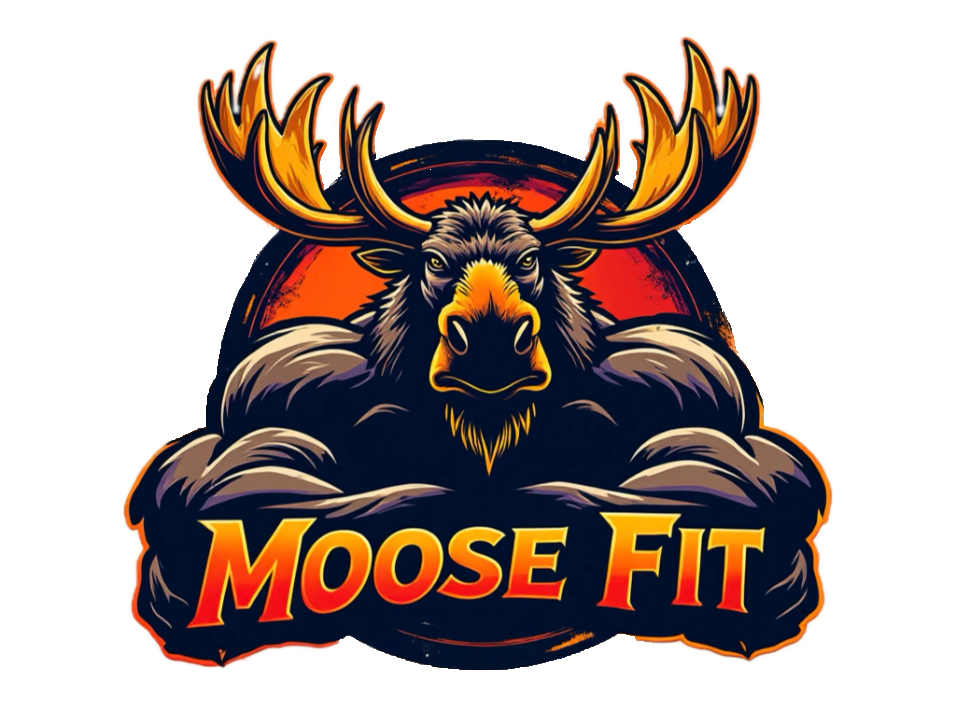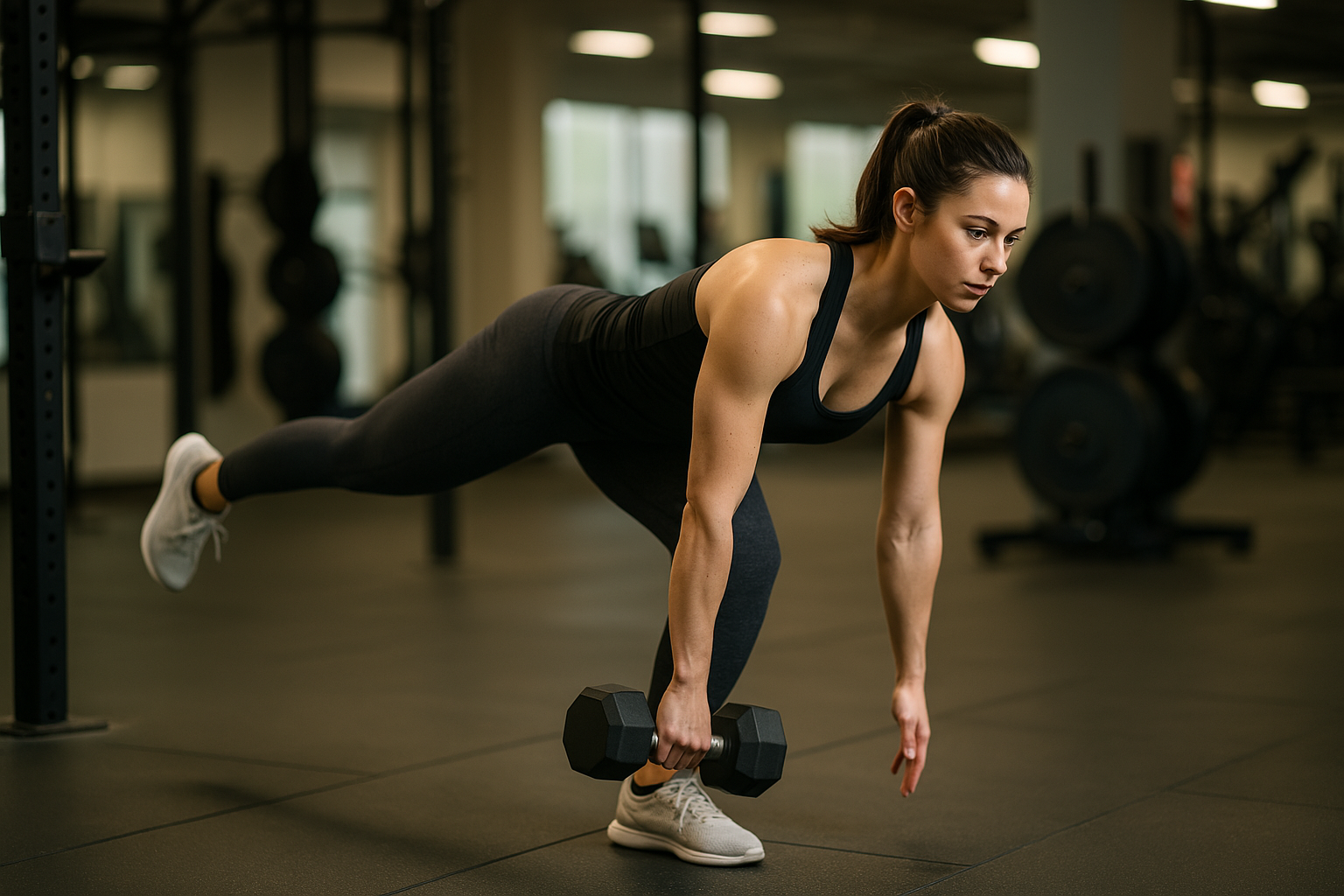The Single-Leg Romanian Deadlift (RDL) is a powerful exercise that targets the posterior chain—hamstrings, glutes, and lower back—while improving balance, stability, and unilateral strength. Whether you’re an athlete, a fitness enthusiast, or someone looking to enhance functional movement, the Single-Leg RDL offers numerous benefits. This blog post explores why this exercise is a game-changer, how to perform it correctly, ways to avoid injury, and tips for incorporating it into your fitness routine.
Benefits of the Single-Leg RDL
- Strengthens the Posterior Chain
The Single-Leg RDL primarily targets the hamstrings, glutes, and lower back, which are critical for athletic performance, posture, and everyday movements like walking or bending. Strengthening these muscles can improve power output for activities like sprinting, jumping, or lifting. - Improves Balance and Stability
Performing the exercise on one leg challenges your proprioception and core stability. This enhances coordination and reduces the risk of falls, making it especially beneficial for older adults or those recovering from injury. - Corrects Muscle Imbalances
Unilateral exercises like the Single-Leg RDL help address strength discrepancies between the left and right sides of the body. This can prevent overuse injuries and improve overall movement quality. - Enhances Functional Fitness
The Single-Leg RDL mimics real-world movements, such as bending to pick something up or stabilizing during dynamic activities. This makes it a great exercise for improving daily functionality and athletic performance. - Low Impact, High Reward
Unlike high-impact exercises, the Single-Leg RDL is gentle on the joints while still providing significant strength and stability benefits, making it suitable for a wide range of fitness levels.
How to Perform the Single-Leg RDL Properly
To maximize the benefits and minimize the risk of injury, proper form is essential. Follow these steps to execute the Single-Leg RDL correctly:
- Starting Position
- Stand tall with feet hip-width apart, holding a dumbbell or kettlebell in one or both hands (or no weight for beginners).
- Engage your core and keep your shoulders back to maintain a neutral spine.
- Shift your weight onto one leg (the “working leg”), keeping a slight bend in the knee.
- Hinge and Lower
- Begin hinging at your hips, pushing your hips back as you lower the weight toward the floor.
- Simultaneously lift your non-working leg straight back, keeping it in line with your torso. Your body should form a “T” shape at the bottom of the movement.
- Keep the hips square to the ground to avoid rotation.
- Maintain Alignment
- Ensure your back remains straight and your head is in a neutral position (avoid looking up or down).
- Lower the weight until you feel a stretch in your hamstring or reach just below your knee, depending on your flexibility.
- The non-working leg should remain straight and extended, with toes pointing toward the floor.
- Return to Start
- Engage your glutes and hamstrings to pull yourself back to the starting position.
- Avoid relying on your lower back to lift you; the movement should come from the hips.
- Keep the movement controlled to maintain balance.
- Repeat
- Perform 8–12 reps per leg for 2–3 sets, depending on your fitness level. Switch sides after completing the set.
Pro Tip: If balance is a challenge, lightly hold onto a wall or bench for support until you build confidence and stability.
How to Avoid Injury
While the Single-Leg RDL is a safe exercise when done correctly, improper form can lead to strain or injury. Here are key tips to stay safe:
- Start with Bodyweight
- Master the movement without weights to focus on form and balance. Only add weight once you’re confident in your technique.
- Avoid Rounding Your Back
- A rounded spine can strain your lower back. Keep your core engaged and maintain a neutral spine throughout the movement.
- Don’t Overextend Your Range of Motion
- Lower only as far as your flexibility allows without compromising form. Forcing a deeper stretch can strain your hamstrings or lower back.
- Control the Movement
- Avoid fast or jerky motions, which can throw off your balance and increase injury risk. Perform the exercise slowly and deliberately.
- Strengthen Supporting Muscles
- Weak glutes, hamstrings, or core muscles can make the exercise harder to perform correctly. Incorporate complementary exercises like glute bridges, planks, or traditional deadlifts to build a strong foundation.
- Use Appropriate Weight
- Choose a weight that challenges you but allows you to maintain proper form. If you’re struggling to balance or hinge correctly, reduce the weight or return to bodyweight.
- Warm Up Properly
- Perform dynamic stretches, such as leg swings or hip circles, to prepare your hamstrings, glutes, and hips for the movement.
Incorporating the Single-Leg RDL into Your Routine
To make the Single-Leg RDL a consistent part of your fitness regimen, consider these practical tips:
- Include It in Lower-Body or Full-Body Workouts
- Add the Single-Leg RDL to your leg day or full-body routine, pairing it with exercises like squats, lunges, or deadlifts for a balanced workout. Aim to perform it 1–2 times per week.
- Progress Gradually
- Start with 2 sets of 8 reps per leg using bodyweight. As you gain strength and confidence, increase to 3 sets, add light weights (e.g., 5–10 lbs), and progress to heavier loads over time.
- Mix Up Variations
- Keep your routine engaging by trying variations like the staggered-stance RDL (for extra support) or using a barbell for added resistance. You can also incorporate a slight pause at the bottom to increase time under tension.
- Combine with Mobility Work
- Pair the Single-Leg RDL with mobility exercises like hamstring stretches or hip flexor stretches to maintain flexibility and prevent tightness.
- Track Your Progress
- Keep a workout log to monitor reps, sets, and weights. Note improvements in balance, strength, or range of motion to stay motivated.
- Listen to Your Body
- If you feel discomfort or fatigue, reduce the intensity or take extra rest days. Consistency is key, but recovery is equally important.
Sample Workout Plan
Here’s a sample lower-body workout that includes the Single-Leg RDL:
- Warm-Up: 5 minutes of dynamic stretches (leg swings, hip circles).
- Squats: 3 sets of 10–12 reps.
- Single-Leg RDL: 3 sets of 8–10 reps per leg.
- Glute Bridges: 3 sets of 12–15 reps.
- Lunges: 2 sets of 10 reps per leg.
- Cooldown: 5 minutes of static stretches (hamstring, quad, and hip flexor stretches).
This Video Helped me I hope it helps you!
Final Thoughts
The Single-Leg RDL is a versatile and effective exercise that builds strength, improves balance, and enhances functional fitness. By focusing on proper form, starting with manageable weights, and incorporating it thoughtfully into your routine, you can reap its benefits while minimizing injury risk. Whether you’re a beginner or an advanced lifter, this exercise can elevate your training and help you move better in everyday life. Start practicing the Single-Leg RDL today and feel the difference in your strength and stability!


